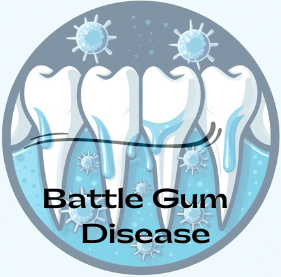
One of the most prevalent problems with oral health is gum disease, sometimes referred to as periodontal disease, but it’s also one of the most poorly understood. With symptoms so minor that they are dismissed like morning breath, it frequently begins quietly. Gum disease can develop from a minor inflammatory condition to a full-blown periodontal disaster if it is ignored. The most important question is: When is it too late to make a change?
Many individuals believe that there is no turning back gum disease once it has started. Thankfully, it isn’t always the case. Although advanced phases may result in irreversible harm, early detection provides a clear route to recovery. The various stages of gum disease, important warning signals, and when you can still take charge—or when you might require professional assistance to save your smile—will all be covered in this article.
Understanding the Stages of Gum Disease
Understanding the stages of gum disease is crucial before determining whether it may be reversed. Gum disease is progressive and develops in three major stages:
| Stage | Symptoms | Reversible? |
| Gingivitis | Gums that are red, swollen, and bleeding while brushing | It is reversible. |
| Early Periodontitis | Gum recession with a little bone loss. | This stage of gum disease is Somewhat reversable. |
| Advanced Periodontitis | In this stage, you will have loss of bone tissue and loose teeth. | Unfortunately, this stage of gum disease is not reversible. |
Gingivitis is completely reversible. It is brought on by plaque accumulation on teeth, and it is treatable with expert cleanings and proper dental care. But when it comes to periodontitis, things get serious. It can cause tooth loss as it worsens because it targets the bone that supports your teeth.
The key to determining if gum disease can still be reversed or simply managed is knowing which stage you are in.
Warning Signs You Shouldn’t Ignore
It’s simple to brush past some bleeding, as I always did, or to dismiss foul breath as the result of last night’s garlic supper. It’s important to pay attention to any distress signals your gums may be conveying to you.
The following are typical signs of gum disease:
- Bleeding gums during brushing or flossing
- Persistent bad breath (halitosis)
- Receding gums or “longer-looking” teeth
- Swollen or tender gums
- Loose or shifting teeth
The Centers for Disease Control and Prevention (CDC) report that 47.2% of people over 30 suffer from some kind of periodontal disease. The percentage rises to 70.1% for individuals 65 and older.
Until any pain appears, most individuals avoid going to the dentist. But the damage can be severe by the time the discomfort starts. It is practically possible to save your smile with early detection.
Reversing Gum Disease: What’s Possible at Each Stage?
So, is it possible to reverse gum disease? It depends on the stage of your gum disease and how you take care of your oral health.
Reversible (Gingivitis Stage):
- Daily brushing and flossing
- Professional dental cleanings
- Antibacterial mouthwash
- Lifestyle changes (e.g., quit smoking)
Gingivitis is characterized by inflammation that is restricted to the gums and has not yet spread to the bone. The problem can be totally reversed with frequent dental checkups and a proper oral hygiene routine.
Partially Reversible (Early Periodontitis):
- Scaling and root planing (deep cleaning)
- Prescription antimicrobial treatments
- Improved home care
At this point, the supporting bone starts to deteriorate. Though it can be controlled and stopped, it is no longer entirely reversible. Dentists can recommend:
Not Reversible (Advanced Periodontitis):
- Gum grafts
- Bone grafts
- Flap surgery
- Tooth replacements or implants
At this point, the bone and gum tissue have sustained irreparable damage. But you still have options. The key finding is that better results are achieved when you take immediate action and do not ignore the problem or symptoms.
When Is It Too Late to Reverse Gum Disease?
So, let’s answer the big question: When is it too late to reverse gum disease?
When your gum disease has reached the advanced level, the most severe case of gum disease, it is too late to reverse the problem. Although the damage cannot be undone once advanced periodontitis has set in, it can be controlled to help avoid tooth loss.
Here’s what you should do, regardless of the stage:
- Visit your dentist for a full evaluation.
- Get professional cleaning or deep cleaning as needed.
- Maintain excellent home care (yes, floss matters!).
- Address lifestyle factors (smoking, poor diet, stress).
Conclusion: Take Action with Any Form of Gum Disease
The truth is that gum disease does not go away on its own, and time is not on your favor. The bright side is that even those with advanced gum disease can maintain a functional smile, save their remaining teeth, and enhance their quality of life with early detection and regular care.
So, is it ever too late to reverse gum disease? In a technical sense, yes—bone and tissue cannot be naturally restored once they are gone. However, it is never too late to take charge of your oral health, prevent more damage, and discuss restoration alternatives with your dentist.
Final Tips for Preventing Gum Disease:
- Brush your teeth twice a day for two minutes.
- Floss at least once a day.
- Use an antimicrobial or fluoride mouthwash.
- Visit your dentist every 6 months (or more if recommended).
Congratulations if you have read this far; it indicates that you are concerned about your oral health. The good news is that you may be proactive in preventing gum disease at every opportunity.
